The History Of 1920s Womenswear: From Flapper To Fabulous
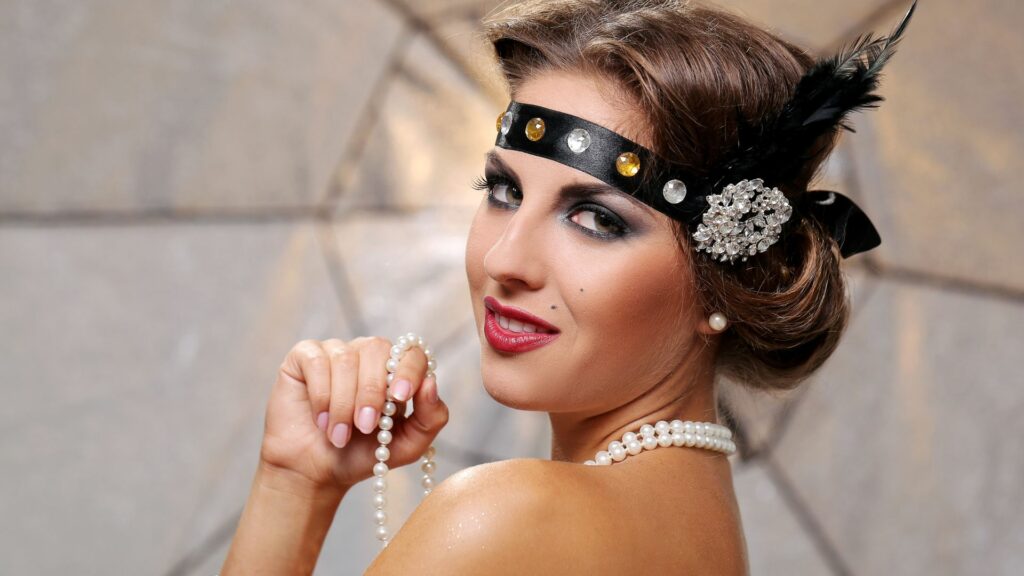
1920s Womenswear:
The Roaring Twenties is certainly one of the more well-known decades of the twentieth century. The decade saw an enormous change in culture and society. The history of the world leading up to and during the ‘20s led it to be arguably one of the most iconic eras for womenswear and fashion. And 1920s womenswear is often remembered for its glitz and glamour, as seen in movies like The Great Gatsby. There is, however, much more to uncover about 1920s womenswear.
I can’t wait to talk about the clothes women wore in that decade and what changed fashion during that time. I’ll discuss the dementia, informal and boyish fashions, and the rebellious flapper dress in this 1920s fashion blog article.
Fashion is a piece of one’s identity and a form of self-expression. Yet it can also reflect the general economic state, social norms, and cultural ideas of the time.
The World in the 1920s
Main Womenswear Influences of the Decade
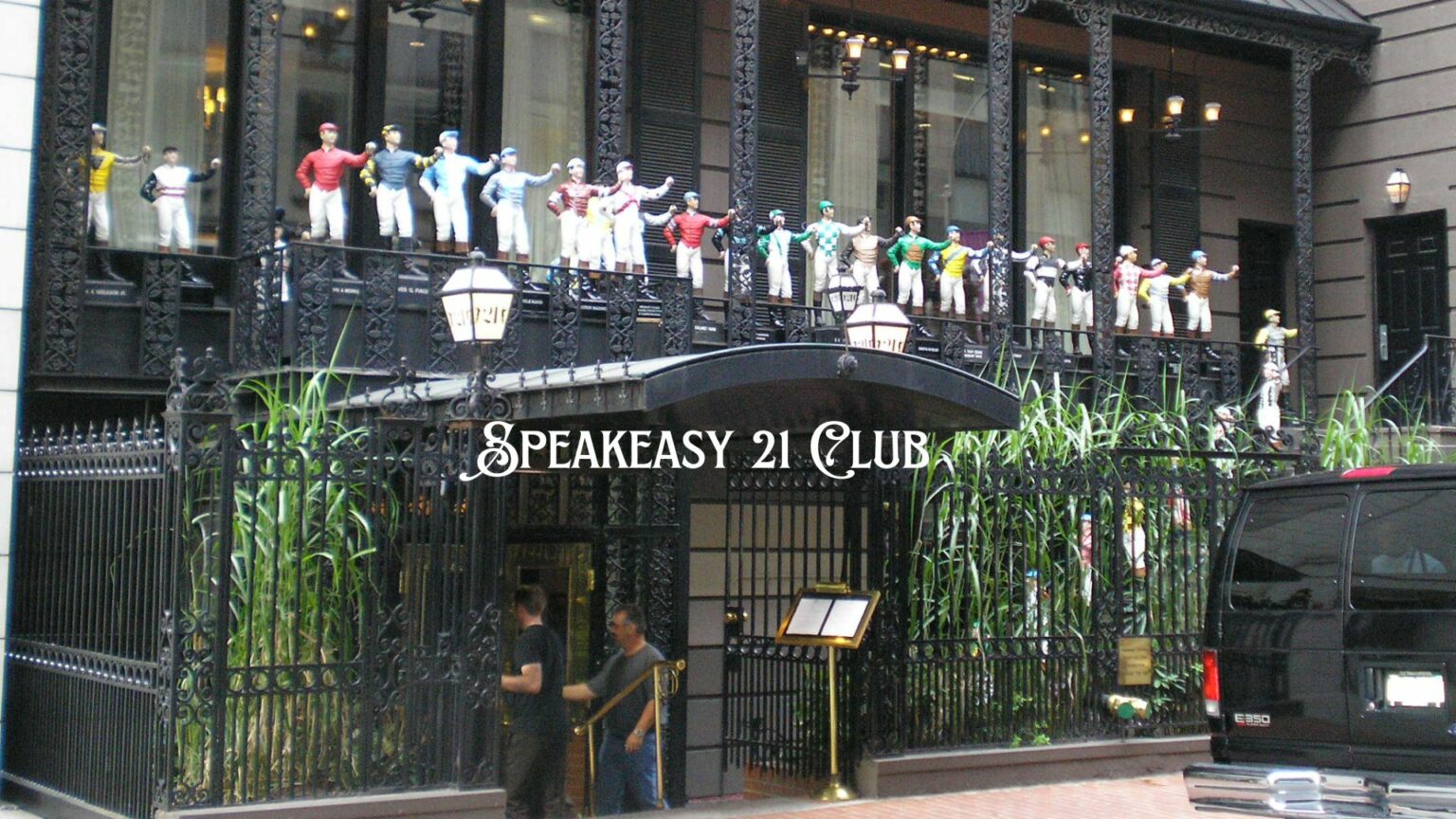
The 1920s saw significant developments in politics and innovation. It brought about the rise of motorcars for the masses, saw jazz music soar in popularity, welcomed the first color films and the discovery of penicillin, and even witnessed the invention of the pop-up toaster!
The end of World War I in late 1918 was a big factor in this new idea. During the war, women globally were expected to take up positions in the workforce that had been typically filled by men. However, many women stayed in offices and industries after the war.
Notably, the Twenties were a decade in which women’s rights and roles were reinvented. Women gained the right to vote, and with this came a new sense of empowerment and independence.
Hollywood, celebrities, and the Jazz Age began in the 1920s. Because new styles and concepts were easy to promote, media and advertising boomed, spreading trends. New design styles, including geometric patterns and Art Deco, were also accepted. Jewelry, home design, and womenswear all used bolder designs.
Although the ‘Roaring Twenties’ are regarded as happy, this wasn’t always the case. The prohibition and alcohol ban caused an influx in speakeasies—the secret bars that sold alcohol where drinking, dancing, and some more defiant behaviors were compressed into small spaces. This, in turn, added to the rebellious nature of the decade.
Also, economic turmoil characterized the decade. America valued its strong economy and prospects. The stock market thrived for much of the decade after the war. More economic investment in developing areas, especially fashion.
Mass manufacture, from vehicles to apparel, spread fashion trends from the ultra-rich to the somewhat prosperous. Mass manufacturing made clothing styles more accessible and faster to develop than in earlier decades.
Notable Features of 1920s Womenswear Fashion
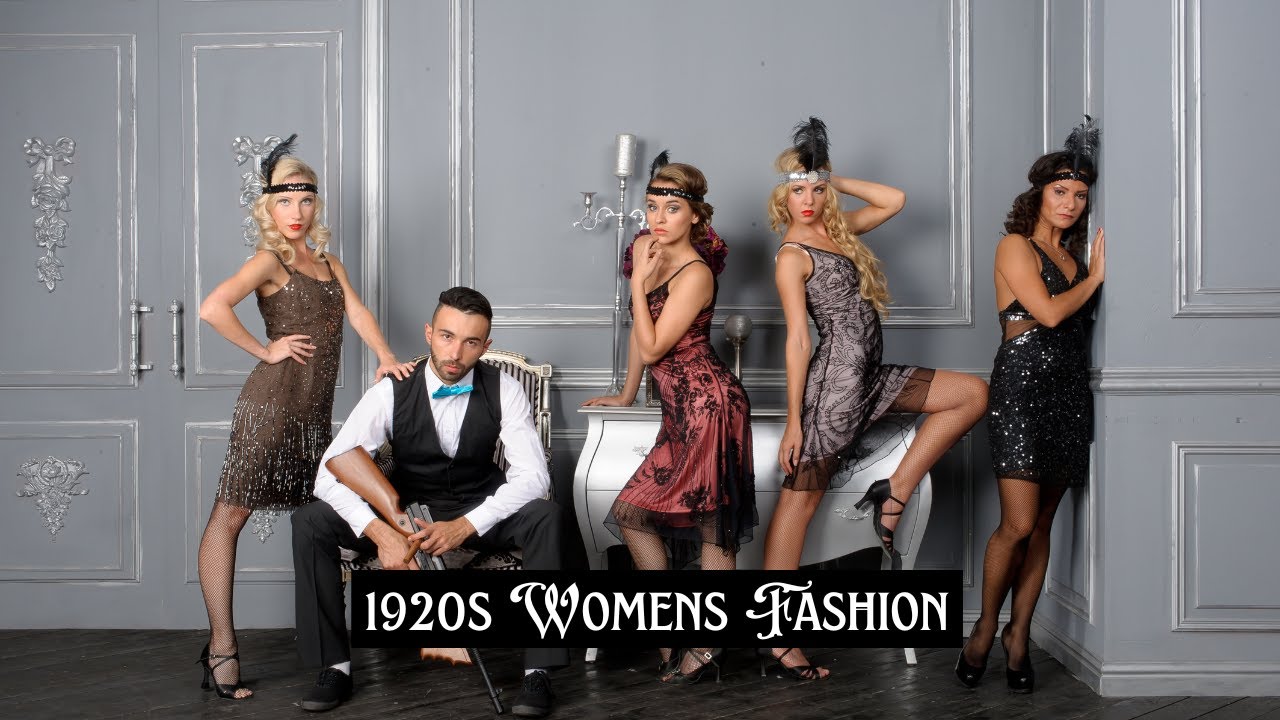
The Flapper Girl
One of the more prominent features of the 1920s was the revolutionary flapper dress. It was contrary to previous centuries of womenswear, offering women a chance to wear looser clothing and experience greater ease of movement.
This 1920s dress was known for its straighter silhouette, edgier cut, boyish demure, and dropped waistlines. This relaxed style also favored lighter fabrics and far less of them! Shorter hemlines were appreciated by women eager to reject the uncomfortable corsets and dance with freedom.
The 1920s flapper dress also favored fringe detailing, sequins, and beads, making it the ideal evening wear.
Borrow From The Boys
In the 1920s, the boyish style had fewer curves and more up-and-down designs with dropped waistlines. The style also selected simple fabrics that didn’t have a lot of heavy decorations like they did in the past.
Instead of accentuating a woman’s rounder features, this trend went against all norms for the time. Consider the trend as a form of rebellion for women in their time of liberation and newfound ability to vote.
This tomboyish style, which was called “garçonne,” was liked by women who wanted to show who they were and feel good in their clothes. Consider that it was the exact opposite of what Rose wore to dinner in the movie Titanic, which was set in 1912, a decade earlier.
Although the tomboy look was popular in this era, the romantic, feminine silhouette was trending in the background. For example, many designers created ‘Robe de Style’ dresses, featuring full and floaty skirts.
1920s Womenswear: Tennis to Lunch?
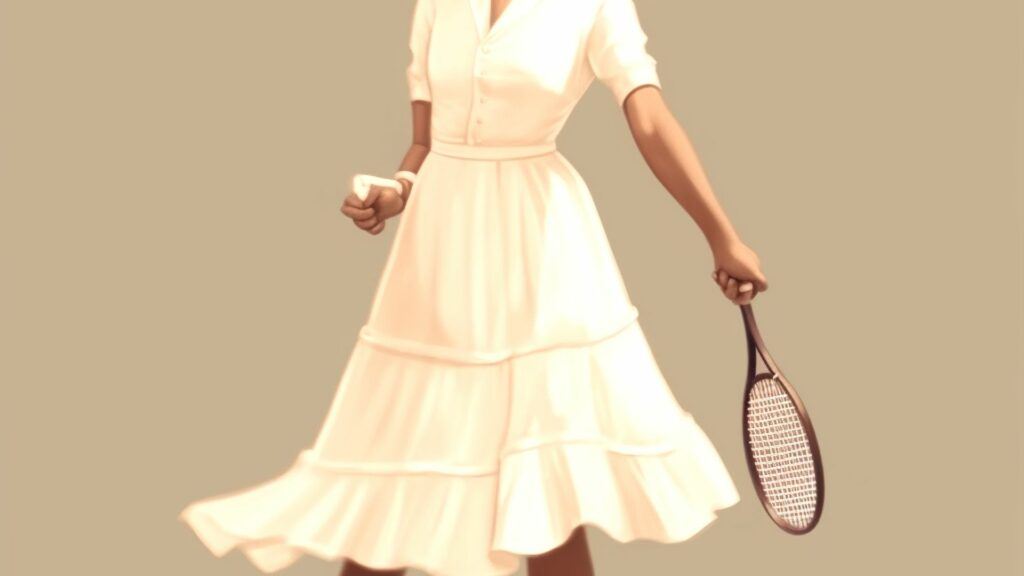
As mentioned, women of this era yearned to move freely (and it’s not a surprise that being jabbed in the ribs by a corset wasn’t anyone’s favorite attire). The ‘20s marked a time when women’s fashion went from strict corsetry to casual sportswear.
One of the major influences in the casual wear trend was tennis legend Suzanne Lenglen, who paired up with designer Lucien Lelong to bring the trend of tennis wear to the everyday lady. Lenglen caused eyebrows to rise at the 1919 Wimbledon Championships in London when she turned up without a corset and in a shorter skirt than usual. However, other tennis players of the time soon followed suit and adopted the shorter hemlines to aid their movement in sport.
In the 1920s, it became increasingly acceptable for men and women to wear practical clothing for activities and sports. These outfits slowly began to transition into acceptable everyday wear and even became trendy choices to wear to lunch!
This trend of tennis teaming with fashion is seen across the next 100 years, with current designers like Jean Paul Gaultier using the tennis trend on the runway. Even tennis-inspired, short, pleated sportswear skirts have been trending in recent years during the resurgence of Y2K fashion.
Short Hair
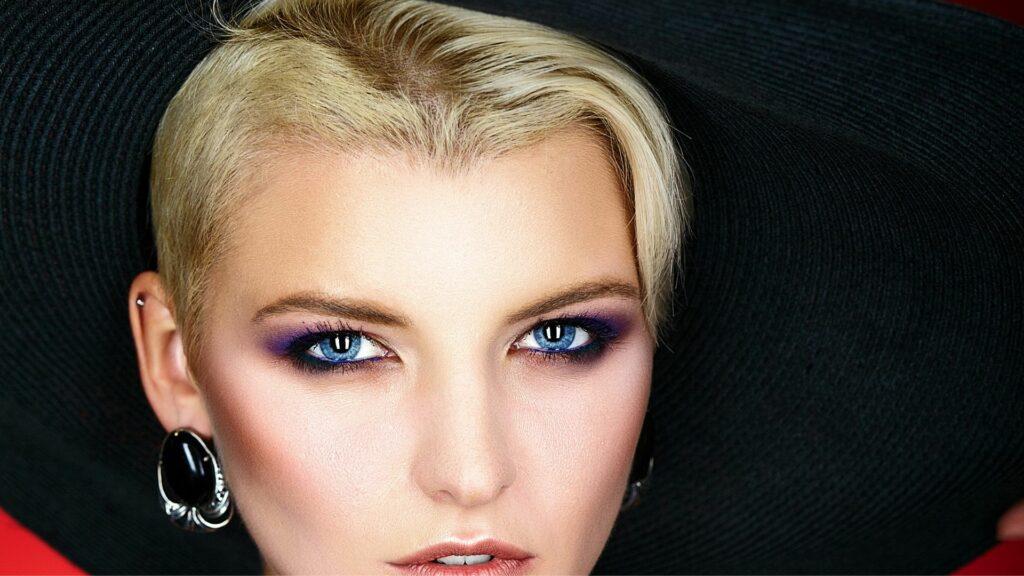
The bob haircut became a key feature of the hip ‘20s after dancer and trendsetter Irene Castle shocked American audiences by cutting her hair into an ear-length bob in 1915. While some women took a while to warm up to the idea of short hair, the bob eventually caught on with wider audiences in the early 1920s.
Interestingly, we can observe the hairstyle trend of the 1920s in popular media. For example, in the popular British TV series ‘Downton Abbey,’ which follows a wealthy family and their servants in the early 1900s. You can see the character Mary, a bold young lady who likes to keep up with the latest fashion, cutting her hair into a bob in an episode set in 1924.
The Little Black Dress
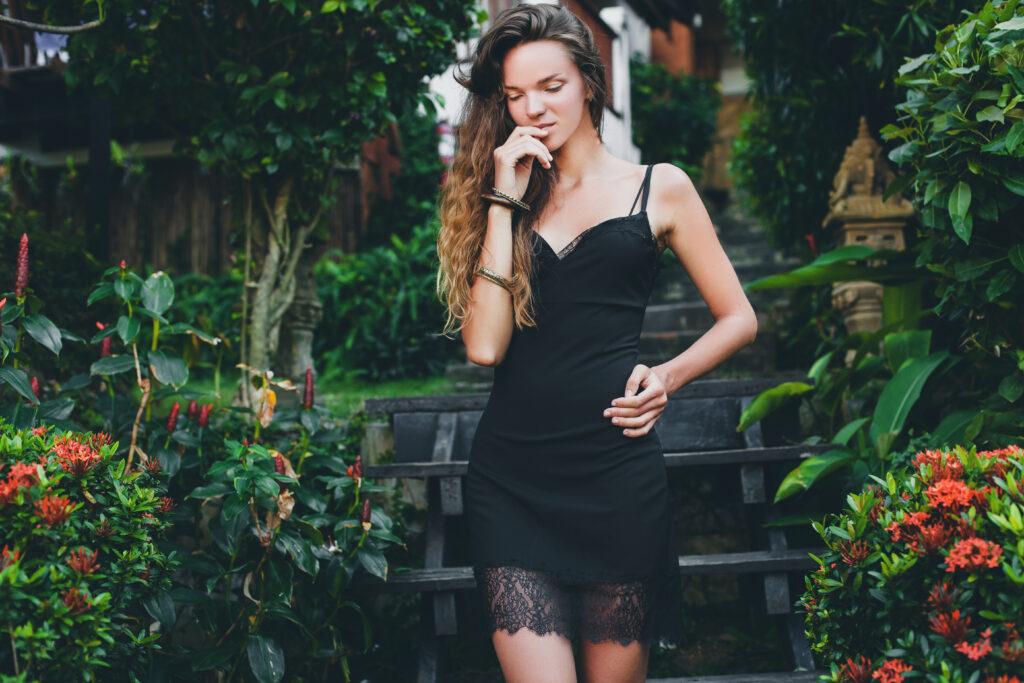
Ask any woman today and the majority will have a Little Black Dress (LBD) in their wardrobe, ready for any occasion. Yet before the 1920s, black dresses were commonly kept for periods of mourning. But, thanks to Chanel, in 1926, black attire was ‘recut’ into a sleek and stylish piece suitable for classy daytime or fancier evening attire, and so the timeless fashion of the ‘Little Black Dress’ was born.
Bouquet of Remarkable 1920s Womenswear Designers
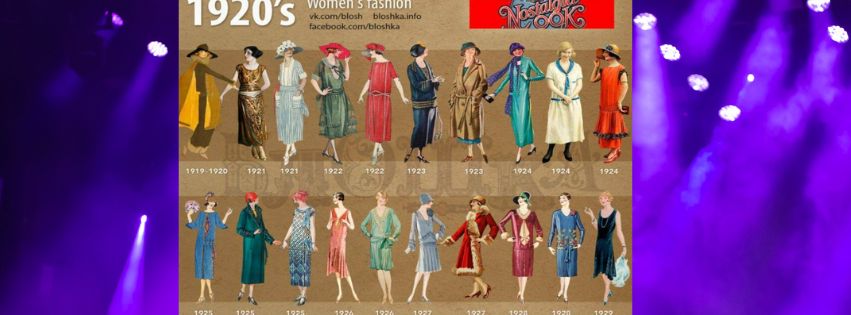
Numerous designers played their hand in creating the cohesion of design elements that made up the iconic 1920s womenswear. However, Coco Chanel is arguably the most famous fashion designer of the period.
Gabrielle, aka ‘Coco’, Chanel was known for her ahead-of-their-time designs and chic style. She drew people in with her radiant personality and wasn’t afraid to stand out. Chanel was also one of the first women to abandon the era’s beauty standards by rejecting the corset and opting to confidently stride in trousers and cut her hair short. What an iconic! It’s no wonder her designs and legacy are still noticeable 100 years later in modern fashion!
A Question and Answer Session on 1920s Womanswear.
Which cities were the most fashion-forward places at the time?
The most fashionable cities at the time were not too dissimilar to today, with New York, Chicago, Paris, Berlin, and London being at the forefront of the fashion of the decade.
What was the 1920s male fashion known for?
This blog post focuses on the fabulous 1920s style. But 1920s male fashion did evolve too, with men seeking more comfortable clothing in softer fabrics, athletic wear, and less formal suits and ties. Male fashion also saw a rise in pinstripes and wide-legged trousers.
What makeup did they wear in the 1920s?
Makeup trends in the ‘20s often focused on extenuating a woman’s features. The makeup was therefore often bold and dramatic with the use of dark, smokey eyeshadows, sharp eyebrows, and red lips. Pale skin was also fairly popular during this time as it accentuated the contrast between the features and the face.
Interestingly, the 1920s was also the era when cosmetic nail varnishes were developed, which led to the beginning of this new industry. Therefore, collecting any nail color or nail lacquer bottle made in the 1920s is a great way to start an antique collection of 1920s accessories and beauty items.
Who was the most famous fashion designer in the 1920s?
Not only was Coco Chanel an outstanding fashion designer for the time. But we believe this famous French design icon is one of the key influences for women’s fashion throughout the 20th century as her designs and trends continue to this day.
1920s Womenswear Stands As More Than a Fashion Era
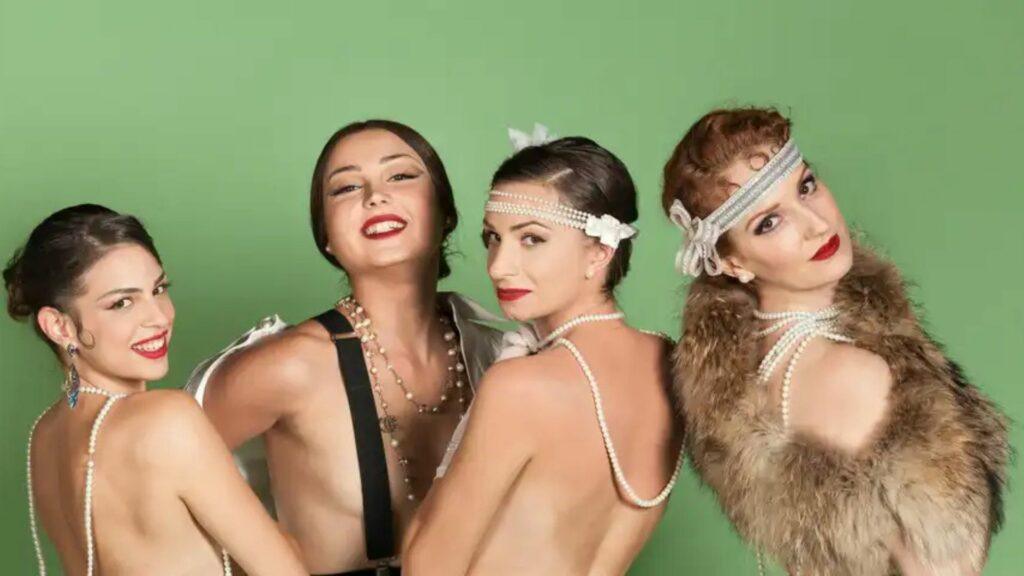
The ‘20s is a celebrated era for fashion, known for its glitz and glamour. And by contrast, women could finally wear comfortable clothes they could dance in. This was the beginning of the era of rebellion, elegance, and comfort all wrapped up in one!
Look out for our upcoming posts about makeup over this dazzling decade and across the 20th century and other topics about antiques, fashion history, and nostalgia over the last 100 years.
Bonus Content
Having gained a better understanding of 1920s womenswear, you could discover the following additional content interesting:

4 thoughts on “1920s Womenswear: From Flapper To Fabulous”
The history of 1920s womenswear is fascinating! The shift from the more restrictive styles of the past to the free-flowing, glamorous designs of the Roaring Twenties really marked a major cultural change. The flapper style, with its bobbed hair and drop-waist dresses, became a symbol of women’s independence and empowerment. It’s interesting how fashion reflected the societal changes of the time, especially with the rise of jazz and the changing roles of women in the workforce. This article really brings that era to life and shows how fashion was much more than just clothing—it was a statement.
Yes, Jacob. I agree women don’t realize the effect they have on men. (or do they?) From the workforce to the air force to the tennis court to the dance floor. Fashion and design played a major role in women’s clothing. What’s next? It is always moving forward. Women’s astronaut suits?
The men in those days didn’t dress too shabbily either. I hope you get to check out that part of this website also. Thanks for the comment
Wow, I am absolutely flapper-struck by this article! I mean, who knew that the 1920s was basically the ultimate fashion revolution? I had no idea that the birth of the little black dress was actually a game-changer that didn’t involve any mourning! Also, I love how women basically said, “Corsets? Pfft, no thanks,” and just went full-on freedom with looser, boyish silhouettes. It’s like they were like, “We’re done with the constriction—bring on the fringe!”
And the bob haircut? Iconic. It’s like they literally said, “Let’s cut out all the drama, and just be fabulous.” Honestly, if I were a flapper, I’d be running around in tennis skirts, sipping cocktails at speakeasies, and cutting my hair every five minutes just to keep up with the trends. I’m obsessed!
I mean, how can you not be in awe of women just casually revolutionizing everything from their wardrobes to society’s expectations all while wearing sequins and fringe? It was basically the ‘Roaring Twenties’ because the world couldn’t handle how fabulous they were. Also, can we talk about how Coco Chanel was like, “Why should I wear a corset when I can wear pants and still look chic?” Legend. If I had a time machine, I’d just want to hang out with her and ask for styling tips.
So, thank you for bringing all this glitz, glamour, and history into my life. I might have to go out and buy a flapper dress… and maybe a bob wig… to live my best 1920s fantasy!
That’s funny, Charles, and thanks for the comment. I find that the roaring 20s was really roaring. Independence, freedom, and invention and innovation all at the same time
That little black dress?. It gets me every time.
You’re right about the bob cut for women, also. To me, that’s sexy. Tennis anyone? The sport was forever changed after the tennis wardrobe update. I’m not a woman, but I know what I like.